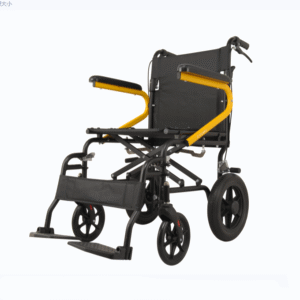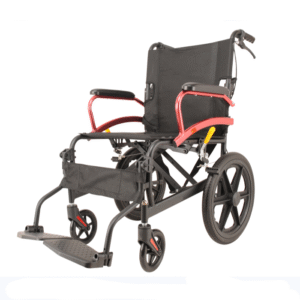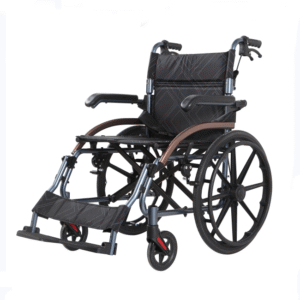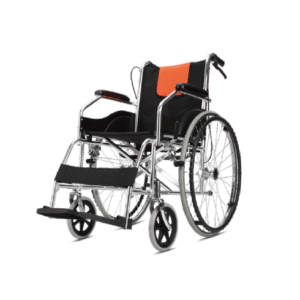5 Key Questions Answered For Airplane Wheelchair
For wheelchair users, air travel can feel daunting—navigating security, boarding, and tight spaces while ensuring your mobility aid stays safe. An airplane wheelchair is designed to solve this: compact, compliant with airline rules, and built to handle the chaos of airports and flights. But what makes a wheelchair “airplane-ready,” and how do you navigate the logistics? Here are 5 critical questions answered to make your next flight smoother.
1. What Defines an Airplane Wheelchair?
An airplane wheelchair is a mobility aid engineered to meet airline regulations for size, weight, and safety—prioritizing portability without sacrificing functionality. Key traits include:
- Compact Fold: Folds to 22x14x9 inches or smaller (carry-on eligible) or 30x20x12 inches (gate-checked), fitting in overhead bins or cargo holds.
- Lightweight: 15–35 lbs for carry-on models (easier for crew to lift); 35–50 lbs for gate-checked versions (still manageable).
- Durability: Reinforced frames (aluminum or carbon fiber) to withstand rough handling in cargo holds.
- Key Difference from Standard Travel Wheelchairs: Standard travel wheelchairs may fold but often exceed airline size limits; airplane wheelchairs are strictly tested to meet FAA/ICAO guidelines for air travel.
2. What Size & Weight Limits Do Airlines Enforce?
Airlines have strict rules to ensure wheelchairs fit in aircraft—here’s what to know:
Carry-On Eligibility:
- Dimensions: Must fit in overhead bins (typically 22x14x9 inches for domestic U.S. flights; slightly smaller for international carriers like Ryanair or Air France).
- Weight: Under 35 lbs (most airlines cap carry-on items at 50 lbs, but lighter wheelchairs are easier to stow).
Gate-Checked Wheelchairs:
- Larger models (up to 30x20x12 inches) are stored near the plane door during flight. They’re returned to you immediately after deplaning (faster than checked baggage).
Checked Wheelchairs:
- For bulkier models (over 30x20x12 inches), airlines check them as cargo. These take longer to retrieve but are still free (no baggage fees for mobility aids).
3. Rules for Powered Airplane Wheelchairs (Batteries)
Electric wheelchairs need extra care to comply with lithium-ion battery regulations:
- Battery Limits: Lithium-ion batteries must be under 160Wh. Batteries 100–160Wh require airline approval (notify them 48 hours in advance). No batteries over 160Wh are allowed.
- Handling: Batteries must be removable, turned off, and protected from short circuits (use original packaging or tape contacts).
- Storage: Powered wheelchairs are almost always gate-checked (too heavy for overhead bins). Crews secure batteries separately to prevent fires.
- Pro Tip: Carry a copy of the wheelchair’s battery specs (from the manufacturer) to speed up security checks.
4. How to Navigate the Airport with a Wheelchair
The process is manageable with preparation:
- Pre-Flight: Notify the airline 48+ hours in advance to request assistance (e.g., pre-boarding, help with storage). Most airlines assign a wheelchair attendant to guide you through the airport.
- Check-In: Drop off luggage first, then confirm your wheelchair’s storage plan (carry-on, gate-checked, or cargo). Get a claim tag for gate-checked models.
- Security: Wheelchairs go through X-ray machines. You can stay seated during screenings—ask for a private pat-down if preferred. Remove loose items (bags, jackets) from the wheelchair first.
- Boarding: Use the airport’s aisle chair (narrow enough for Airplane Aisle) to board. Your wheelchair is stored in the cargo hold or near the door (gate-checked).
- Deplaning: Airlines prioritize returning wheelchairs first. Wait near the door, and inspect it for damage before leaving the gate.
5. What to Look for When Choosing an Airplane Wheelchair
Prioritize these features for stress-free travel:
- Fold Mechanism: One-handed folding (under 10 seconds) saves time at gates. “Suitcase-style” folds (with a handle) are easiest to carry.
- Size When Folded: Measure your airline’s overhead bin limits (check their website) and choose a wheelchair 1–2 inches smaller to avoid issues.
- Weight: Under 35 lbs if you want to carry it yourself; 35–50 lbs is okay for gate-checked models (crew will assist).
- Durability: Look for rust-resistant frames (aluminum) and puncture-proof tires (avoids flats during travel).
- Compliance: Choose models labeled “FAA-compliant” or “airline-approved”—these meet strict safety standards.
Conclusion
An airplane wheelchair isn’t just a mobility aid—it’s your ticket to accessible air travel. By understanding size limits, battery rules, and airport logistics, you can choose a model that fits your needs and the airline’s requirements. With preparation, flying with a wheelchair becomes a smooth, empowering experience.
Thank you for reading this, dear, if you have any suggestions about our website or want to know about wheelchair, please contact us. We will respond quickly.



